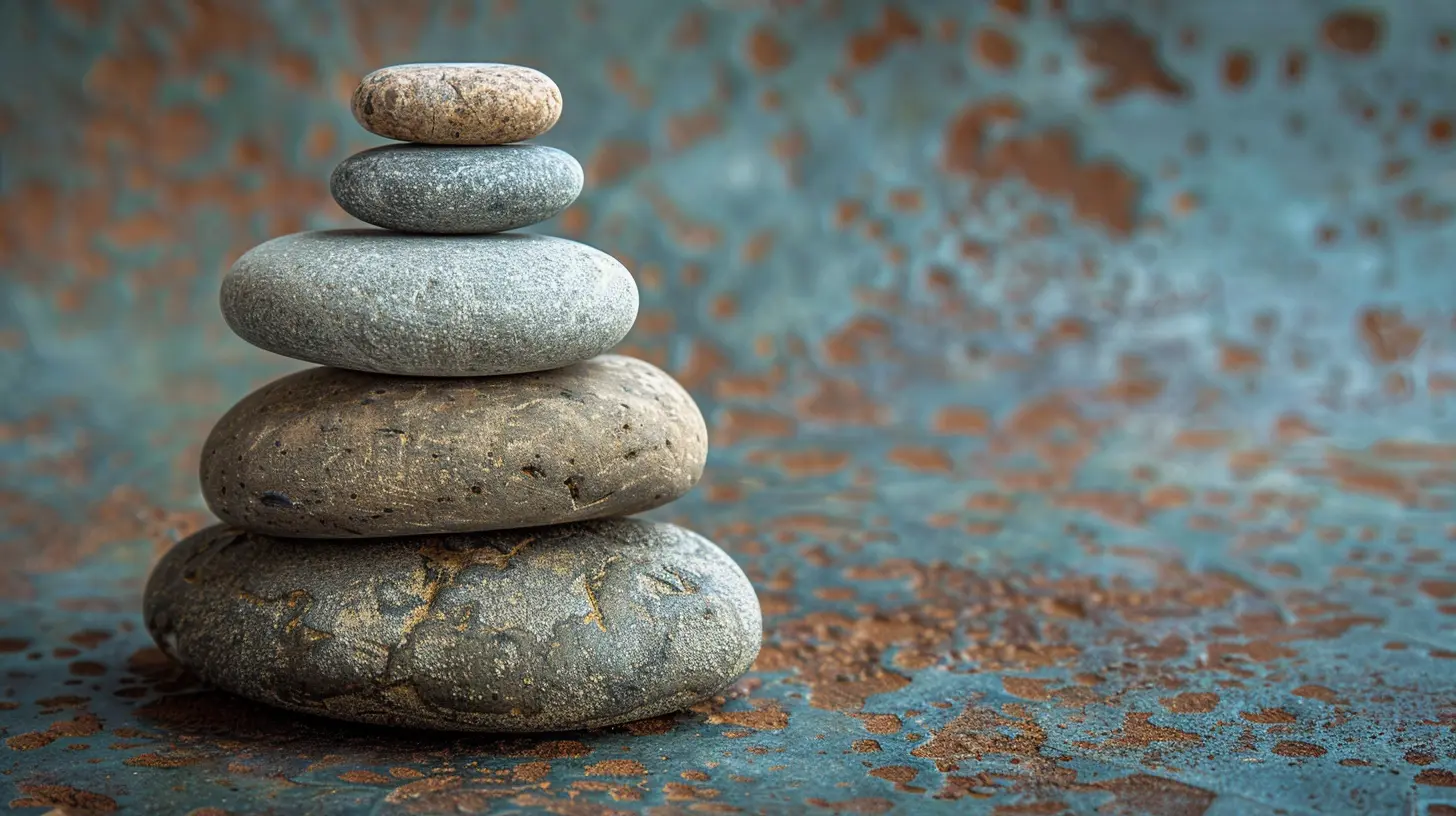How to Practice Radical Acceptance for Inner Peace
28 August 2025
Life is messy, unpredictable, and (let’s be honest) often downright unfair. We face heartbreaks, unexpected curveballs, and painful truths we wish we could change. Most of us spend a lot of time fighting reality—arguing with it, wishing it were different, or replaying the “what-ifs” and “should-have-beens.” But what if I told you there's a way to find peace in the middle of all that chaos?
That’s where radical acceptance comes in. And no, it's not just another trendy self-help buzzword. It’s a deeply transformative practice that can help you stop resisting what is and start healing from it. So, let’s dive into what radical acceptance really is, why it’s so powerful, and—most importantly—how to practice it in your everyday life.

What Is Radical Acceptance?
Radical acceptance is the idea of fully and completely accepting the present moment for exactly what it is—without judgment, resistance, or denial. Think of it like this: life hands you a big, ugly lemon. Radical acceptance doesn’t mean you pretend it’s a peach. It means you acknowledge, “Yep, this is a lemon,” and then decide what to do next without wasting energy wishing it were different.It’s not about approval. You don't have to like what's happening. You simply accept that it is happening.
This concept is a cornerstone of Dialectical Behavior Therapy (DBT), developed by psychologist Marsha Linehan. In DBT, radical acceptance is seen as a way to reduce suffering—not by changing your circumstances, but by changing your relationship to them.

Why Do We Resist Reality?
Let’s be real: accepting painful truths is hard. We’re wired to avoid discomfort. When something hurts, our natural reaction is to push it away, deny it, or try to fix it immediately.Here are a few common ways we resist reality:
- Saying things like, “This shouldn’t be happening.”
- Ruminating over how unfair something is.
- Clinging to the past and replaying events over and over.
- Trying to control everything to avoid pain.
But here’s the thing—that resistance doesn’t actually solve anything. In fact, it makes things worse. It’s like trying to swim upstream in a raging river. You burn out fast and still end up downstream—only now you’re exhausted and frustrated.

The Link Between Radical Acceptance and Inner Peace
When you let go of resistance, what’s left? Stillness. Relief. A sense of freedom.Imagine carrying a heavy backpack for years—filled with regrets, anger, heartbreak, and denial. Radical acceptance is like finally setting that backpack down. Your circumstances might not have changed, but your suffering lightens.
Inner peace doesn't come from perfect lives or painless days—it comes from the ability to sit with imperfection and still feel okay. Radical acceptance transforms your inner world, helping you navigate tough times without getting emotionally hijacked.

Misconceptions About Radical Acceptance
Before we go deeper, let’s clear up a few myths.1. “If I accept it, that means I’m okay with it.”
Nope. Acceptance is not the same as approval or giving up. You can acknowledge reality and still want to change your circumstances. In fact, real change only happens when you start from a place of truth.2. “If I accept things, I’ll stop trying.”
Actually, the opposite is true. Acceptance gives you clarity. When you stop wasting energy on resisting what is, you have more mental space to respond effectively.3. “Radical acceptance is passive.”
Not at all. It’s one of the most courageous and active things you can do. It’s the emotional version of standing tall in a storm without flinching.How to Practice Radical Acceptance (Step-by-Step)
Let’s break it down. Radical acceptance isn’t a once-and-done kind of deal. It’s a muscle. The more you use it, the stronger it gets.1. Acknowledge Reality
This is the starting point. You can’t accept what you're not willing to see.Ask yourself:
- What’s actually happening right now?
- What am I feeling?
- Am I resisting something emotionally, mentally, or physically?
Be honest. Brutally honest, if you have to be.
2. Identify the Pain vs. the Suffering
Pain is inevitable—things hurt. But suffering often comes from our resistance to the pain.For example:
- Pain: “My partner left me.”
- Suffering: “I’ll never be loved again. I must be worthless.”
See the difference? Radical acceptance helps you feel the pain without layering suffering on top of it.
3. Let Go of the “Shoulds”
Ah, the “shoulds”—they sneak in like uninvited guests:- “This shouldn’t be happening.”
- “They should have treated me better.”
- “I should be stronger.”
Shoulds are often just disguised resistance. Swap them out with phrases like:
- “This is what's happening right now.”
- “It is what it is, and I can handle it.”
Not super glamorous, but incredibly freeing.
4. Feel Your Feelings (Without Judging Them)
Stuffing down emotions never works. They just fester and explode later.Instead, try this:
- Sit with the feeling. Name it.
- Don’t analyze it. Just observe it—like watching a cloud pass in the sky.
- Let it be there without needing to fix it.
The more you allow your feelings, the less power they have over you.
5. Use Mindfulness Practices
Mindfulness and radical acceptance are like peanut butter and jelly—they just go together.Try any of these:
- Meditation (even 5 minutes!)
- Deep breathing
- Body scans
- Noticing your thoughts without judgment
Mindfulness helps you stay grounded in the “now,” which is the only place where acceptance lives.
6. Practice Compassion (Especially Toward Yourself)
This part’s huge. Self-compassion is the secret sauce of radical acceptance.Talk to yourself the way you would talk to a friend. You're not weak for feeling overwhelmed. You’re human.
Try saying:
- “This is hard, and I’m doing the best I can.”
- “I don’t have to have it all figured out.”
- “I deserve kindness, even in this moment.”
7. Remind Yourself: Acceptance Is a Daily Choice
Some days you’ll nail it. Other days, not so much. That’s okay.Acceptance isn’t a permanent state. It’s a gentle choice you make again and again—sometimes every five minutes.
You might have to radically accept the same situation multiple times. That’s not failure—it’s life.
Real-Life Examples of Radical Acceptance
Still wondering what this looks like in real life? Here's how others use radical acceptance in everyday situations:- After a breakup, instead of obsessively questioning what went wrong, someone tells themselves, “It’s over. I’m heartbroken, and that’s okay. I’ll heal.”
- A person with chronic illness stops judging their body and begins focusing on what they can do, rather than what they’ve lost.
- Someone going through a job loss shifts from panicking to accepting the uncertainty and taking steps forward with clarity.
The Benefits of Practicing Radical Acceptance
Once you start practicing, you’ll begin to notice a few beautiful shifts happening within you:- Less stress and anxiety
- More emotional resilience
- Stronger relationships (when you stop trying to change others)
- Better sleep (bye-bye, 2 a.m. rumination)
- A general sense of calm—even when things aren’t perfect
Inner peace doesn’t come from avoiding life's storms; it comes from learning how to dance in the rain.
When Radical Acceptance Feels Impossible
Let’s be honest—some things in life are really, really hard to accept. Abuse, trauma, injustice—they aren’t things anyone should just “be okay” with.In those cases, radical acceptance isn’t about excusing what happened. It’s about stopping the ongoing cycle of emotional suffering that comes from constantly revisiting and reliving it.
Therapy, journaling, support groups, and trauma-informed care can be incredibly helpful here. You don’t have to go it alone.
Final Thoughts: You’re Stronger Than You Think
Radical acceptance isn’t about being passive or emotionless. It’s about gaining the strength to face reality with open eyes and an open heart. It teaches you to stop fighting battles that you can't win and instead focus your energy on what you can control—your thoughts, your actions, and your responses.It’s not easy, but it is worth it.
So, next time life throws you into a storm, remember this: you don’t have to love the storm. You just have to stop pretending it isn’t raining. Then, grab your umbrella, take a deep breath, and carry on—with peace in your heart.
all images in this post were generated using AI tools
Category:
Self HelpAuthor:

Matilda Whitley
Discussion
rate this article
1 comments
Zeke Klein
Radical acceptance is not a passive resignation but an active engagement with reality, fostering profound inner peace. By embracing our circumstances without judgment, we liberate ourselves from the weight of resistance. This practice nurtures resilience and allows us to transform suffering into a deeper understanding of our own existence.
August 31, 2025 at 4:34 AM

Matilda Whitley
Thank you for your insightful comment! You're absolutely right—radical acceptance empowers us to engage actively with our reality, paving the way for profound inner peace and resilience.


